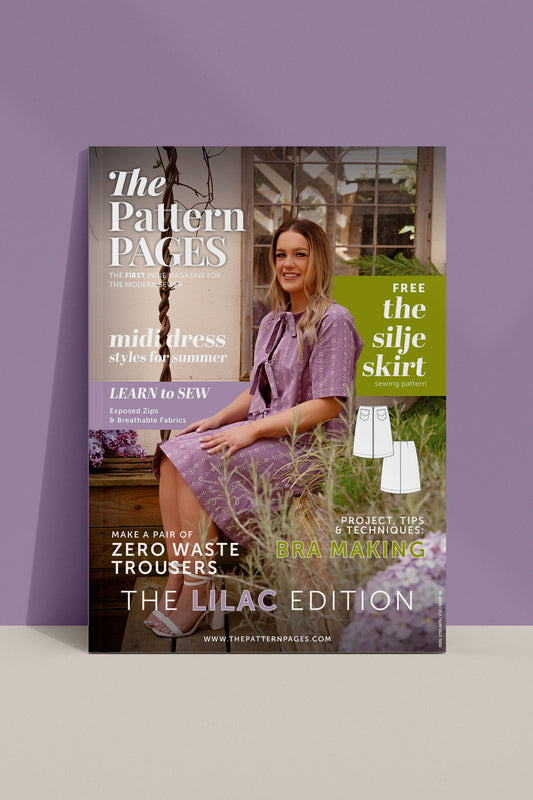
How to Cut Stripes and Checks when Sewing
Share
Cutting stripes and checks when sewing can take a little longer to cut than plain fabrics, but the results can be very rewarding! Liz Haywood explains why
Perfectly matched stripes and checks are a sign of quality, and the more expensive the garment is the more seams are matched. High-end garments have matched seams even on inside areas such as facings. You’ll usually (but not always) need extra fabric to match the pattern, here's a few tips to get you started when sewing with checks and stripes
Balanced and unbalanced stripes and checks
Balanced means they have symmetrical repeats, so the pattern looks the same in either direction. These are much easier to work.
Unbalanced stripes and checks are asymmetrical in one or both directions, and are more difficult to match.

Two striped shirt cuffs – the blue one on the left has balanced stripes, while the multi-coloured one on the right has unbalanced ones. The above two tartan rugs show balanced checks on the left (green) and unbalanced on the right (red).
Where to match the check or stripe
The general rule for matching is to match vertical stripes at horizontal seams, and horizontal stripes at vertical seams. You might not be able to match at every seam, but some matter more than others.
TIP: To make it easier, select designs that use darts for shaping, rather than seams. For example, choose darted bodices over princess line.

- At a bare minimum, match or mirror the design at the centre front. If you only match in one place, match it here! Even budget garments match at the centre front.
- Match the shoulder seams, if you can.
- Match the sleeve as it runs across from the body.
- Try to position checks or stripes centrally at the front or back. Position them centrally down sleeves and on collars, too. You’re aiming for symmetry, so the garment looks pleasing to the eye when it’s worn.
- Low on the priority list: underarm seams on sleeves, hidden facings, under collars, side seams above bust darts, cuff plackets, trouser inseams.

If you can’t match perfectly, don’t match at all!
Consider cutting some of the pieces on the bias for a more interesting effect.
Pockets, yokes, plackets and front bands, collar and cuffs, tabs, side panels and godets can all look good cut on the bias.
To do this, draw in a new grainline at 45 degrees to the old one.

This shirt (shown here on the left) has the back yoke cut on the bias. A zip-front jacket (shown here on the right) with the entire body cut on the bias. Stripes and checks can look totally different on the bias – they typically don’t look as harsh and tailored.
How to cut stripes and checks
A big plus is you won’t have to measure the grainline! Simply align it with the nearest stripe.
Stripes and checks can be cut with the fabric in single layer (takes longer but it’s more accurate) or folded double (faster). For fabric cut in a single layer, some people prefer to make whole pattern pieces.
- For a folded layout – lay the fabric folded along a stripe or check so that the stripes are sitting exactly on top of each other. Pin if necessary to stop the layers shifting. The selvedges might not sit on top of one another but should still be parallel.
- Position any pattern pieces on the fold first (the back or the front) and note where the prominent stripes lie on the side seams and shoulder seams. Position the corresponding pieces to match.
- Lay out all the large pieces first, then decide on the smaller pieces such as pockets, tabs, cuffs and collars. You may decide to delay cutting these pieces until you fit the garment.
Experiment with scraps to see what looks best – either perfectly matching the pattern or cutting them on the bias, and have fun!
For more helpful tips and advice to improve your sewing, visit our Learn to Sew page
Author: Liz Haywood | IG: lizhaywood3754 | lizhaywood.com.au




